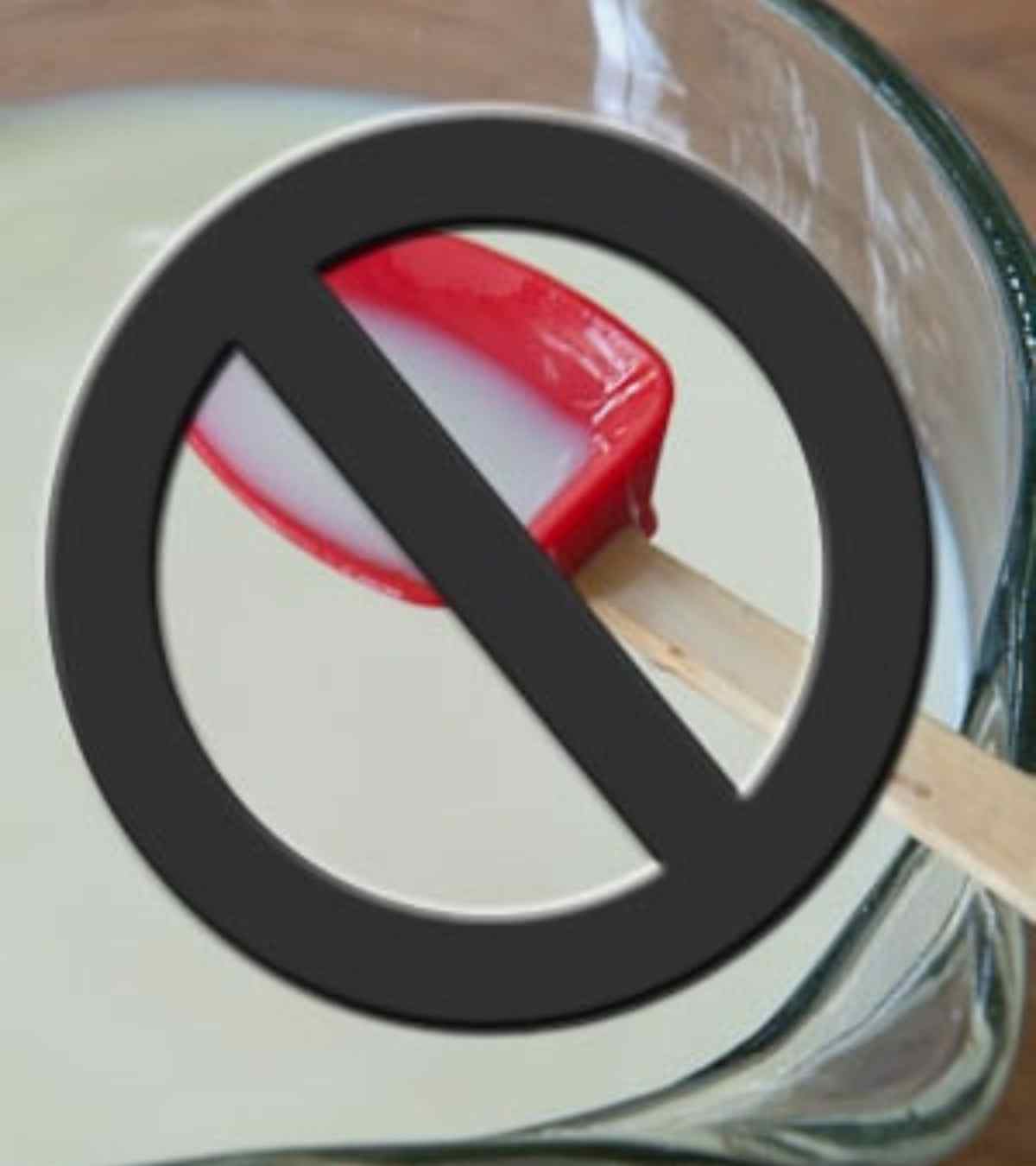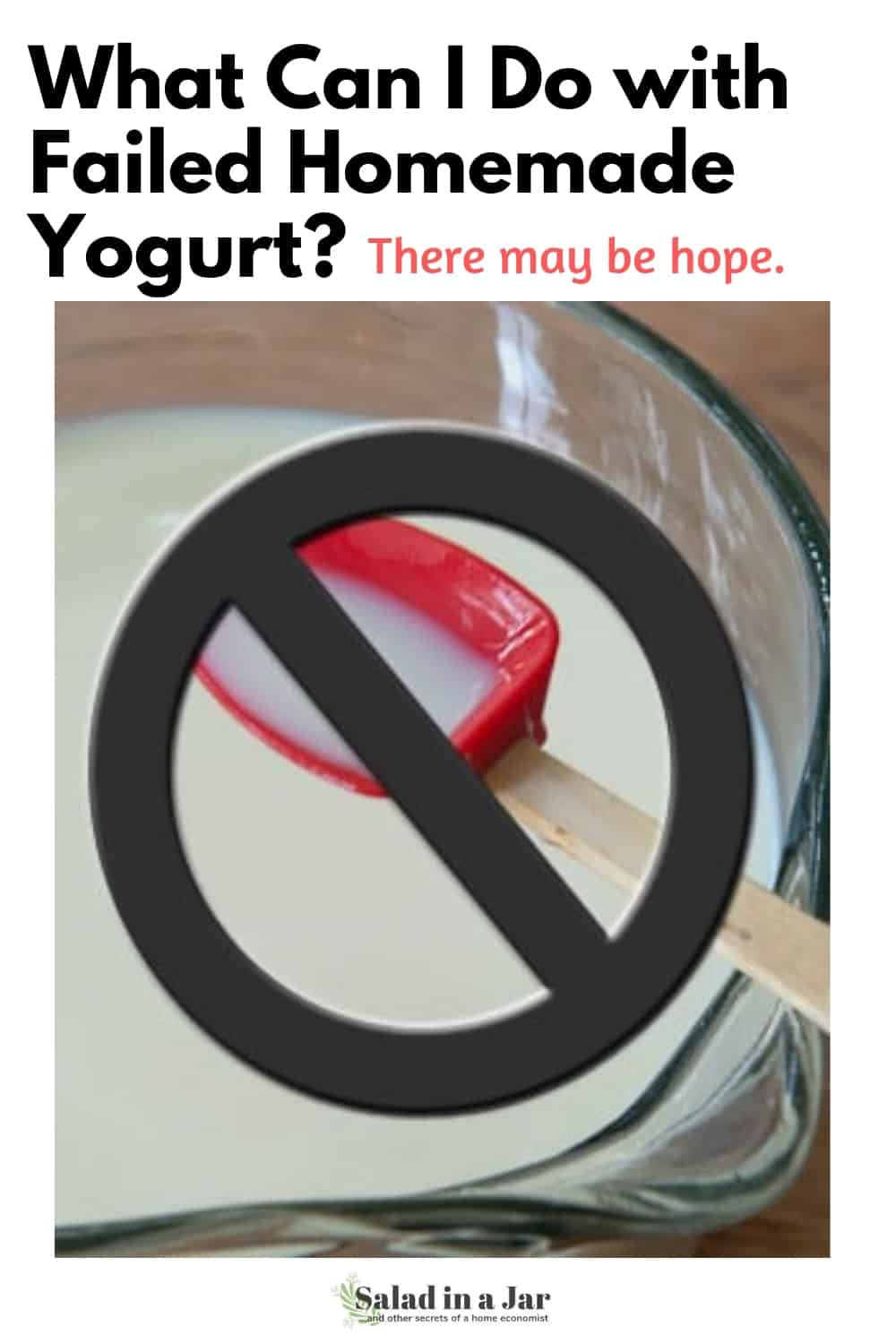My Yogurt Didn’t Set. What Can I Do?
Sneak Preview: If your yogurt didn’t set, don’t throw your milk out yet! I’ll show you what to do next. Then, we’ll talk about what may have gone wrong so that your next batch will be successful.

As an Amazon Associate, I earn from qualifying purchases.
Have you just discovered your yogurt project still looks like milk? So now you’re asking yourself what to do next.
DON’T GIVE UP JUST YET!
Oh, the disappointment and anguish over wasting money on milk, not to mention your time.
I can’t count how often I get desperate emails seeking to recover and make good yogurt from the same batch of milk or recycle the non-yogurt milk into something entirely different.
Happy Cooks Speak Up
Thank you so much! My yogurt failed and this post was exactly what I was hoping to find.–JULIE B.
You are not alone!
The answer to these questions can go in several ways. First, if you know why your yogurt failed, you have a good chance of success if you try again with the same batch.
Was your incubation temperature too high or too low? Was your starter too old or dead? Check out my yogurt trouble-shooting post if you aren’t sure.
But what if you don’t know what you did wrong and do everything the same way again? As the old saying goes, you can expect the same poor results.
Here are some suggestions based on my own experience.
Four steps to possible yogurt recovery
1. Does the milk smell bad?
If so, throw it out — no need to ask any more questions.
If the milk still smells OK and you aren’t feeding it to anybody who is immunocompromised, such as the very young, the very old, or the very ill, then proceed to the next step.
2. Is it necessary to reheat the milk?
I assume you heated the milk to 175˚-180˚F (79-82˚C) the first time and then let it cool back to 100-110˚ F (38˚C-43˚C). DO NOT reheat a second time to 175˚F.
If your milk has cooled to room temperature or you put it in the fridge for a while, warm it to 100˚F (38˚F), if desired. BE VERY CAUTIOUS not to let the milk go above 110˚ F.
If you accidentally overheat the milk, it will probably separate or clabber. Congratulations, if you strain it, you’ve just made fresh ricotta cheese. KEEP READING for what to do next if this happens to you.
3. Should I add a new starter?
Yes, especially if you suspect the original starter was the cause of your failure. Make sure the new starter is fresh and contains no additives.
4. How do I re-incubate?
After stirring in the new starter, incubate the milk mixture. Ensure that the temperature is no less than 100˚F (38˚C) and hovers between 105-110˚F (38-43˚C). Even if you use a yogurt maker or Instant Pot, check the temperature with a quick-read thermometer. These appliances can malfunction.
See the video above for instructions for making yogurt from beginning to end if you prefer pictures to words.
Option #2 for failed yogurt that still smells good but looks like milk:
Make fresh ricotta cheese with failed yogurt
If you remembered to add “starter,” you could try this idea. I accidentally discovered it when I had a yogurt fail recently.
In step #2 above, I heated the milk back to 100˚ F in the microwave. But somehow, the milk was warmer than I realized. In no time, the milk started boiling (and popping).
Overheating milk that contains a starter will cause it to curdle and separate. Adding the starter changes the pH.
Don’t panic!
Grab a slotted spoon and dip the curds into a cheesecloth or coffee-filter-lined colander. This process will drain most of the whey off. After that, only the curds will be left behind.
Season the ricotta cheese with a pinch of salt and refrigerate it. Your reward will be fresh ricotta cheese, perfect for lasagna or almost any other ricotta recipe. Use it immediately, or freeze it for the next time you make lasagna soup.
For more information and pictures, see my post on making ricotta cheese.
Let’s figure out what went wrong.
Why did my yogurt fail?
1. Did you remember to add the starter?
I’ve had several failures through the years, primarily due to forgetfulness.
For example, I heated three batches of milk (2 quarts each) last night. Then, as usual, I set them on the counter to cool down to approximately 110˚ F.
Later in the evening, I went to bed without thinking about the milk again until I awoke at 6:00 this morning. As I lay in bed, I realized I forgot to add the “
Throwing out all that milk was unthinkable. But it didn’t smell bad, so I heated the milk to 100 degrees, added a little more starter, and incubated it as usual. Five hours later, I had perfect yogurt.
2. Was the starter compromised?
Was your starter fresh? The fresher, the better. When older than ten days, your chances for good yogurt decrease quickly.
Is it possible you killed the yogurt because your milk was too hot when you added the starter? Use a digital quick-read thermometer(paid link) if you aren’t sure.
3. Does your incubation system maintain the correct temperature?
Another scenario I often hear about is forgetting to turn on the heat for your incubation “system.” Again, if the milk still smells OK, reheat the milk mixture to 100˚ F. Turn on your heat source for incubation and give the milk a few more hours to make yogurt.
If your system doesn’t include a built-in thermostat, you might want to double-check it. For example, is it holding the temperature where it needs throughout the entire incubation period?
4. Is your yogurt too thin?
Perhaps your “fail” could be better described as drinkable yogurt. Then, as long as it smells good, you could try again.
Perhaps it just needs to incubate longer. Keep incubating. Remember, the party is over once you stir or jostle the inoculated milk. Try again with a new starter.
There are many ways to make the yogurt thicker before incubation with additives and techniques. However, straining a batch of completed yogurt is the easiest way to make it thicker without picking up an extra flavor.
Unfortunately, if your yogurt is very thin, it won’t strain well. Instead, it will pour right through your lined strainer. If this is your situation, try again with more starter.
If you don’t want to re-incubate, I recommend using the yogurt milk as is, even if it’s not what you originally planned. Try it in smoothies. Substitute it for buttermilk in baked goods such as these cinnamon biscuits. Or make ricotta cheese as described above.
As one of my readers once told me, “The yogurt gods can be fickle.” The results can be unpredictable whenever you’re dealing with a live organism.
Parting Thoughts: Don’t be discouraged if you are new at making yogurt. It’s not like making brownies. Just because you follow a recipe exactly, there are no guarantees of a perfect result. It can take several tries to get your system worked out because everybody’s kitchen, temperatures, milk, starters, equipment, and method are slightly different.
The more experience you have, the fewer failures you will experience.
If you have questions or suggestions, email me privately for a quick answer: Paula at saladinajar.com. Hope to see you again soon!




Paula Rhodes, owner
As a retired home economist, I created Saladinajar.com to share my belief that you don’t have to be a chef to find joy in creating homemade food worth sharing. Bread machines (used in an unconventional way), homemade yogurt, and quick microwave recipes are my specialty.